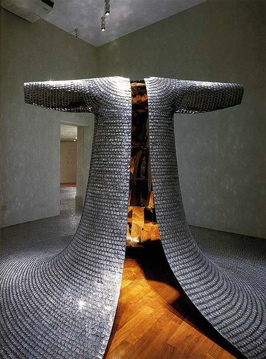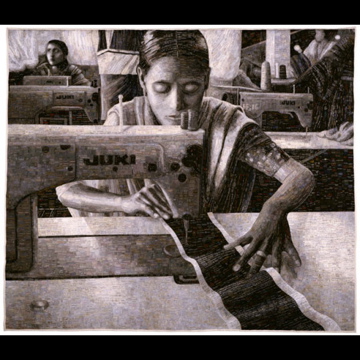
Do-Ho Suh, "Some/One," 2001
This week two of my classes will visit the Museum of Art and Design’s first major exhibit in its new space at Columbus Circle, Second Lives: Remixing the Ordinary. Among the works included in this magnificent show are sculptures by Do-Ho Suh, Tara Donovan, Jean Shin, and Sonya Clark. Two floors of the museum are devoted to surprising and often stunning works made from everyday materials, but the works go beyond what Roberta Smith of the New York Times calls, “…the massing of something small (plastic spoons, ladies’ pumps, spools of thread, dangling eyeglasses) into something large (a pyramid, a love seat, a view of the “Mona Lisa,” a chandelier).” This is what we intend to focus on in our visits.
Works like these teach students to think beyond conventional art media. They teach students that you do not need expensive art supplies to create beautiful and unique objects that become something else in the hands of an artist. They become forms and colors and textures that just happen to be spoons, pumps, spools of thread, and eyeglasses in the first place. Depending on the way the artist arranges the objects, the work can even become a teaching tool for interdisciplinary themes, such as Terese Agnew’s Portrait of a Textile Worker, created solely from clothing labels.

Terese Agnew, "Portrait of a Textile Worker," 2005
On a preview visit, I saw two people approach this particular work from across the room and their facial expressions went from wonder to surprise to a focused, silent stare. One woman began to cry. The more I stood and contemplated the labels that represented so many young lives, the more I felt like crying myself. Clothing labels arranged in a cute pattern can’t have this effect on people. It’s about transformation. And since so much in the world of contemporary art deals with transformation, this museum visit is an important step for my students to take in order to understand the breadth of visual possibilities in materials they encounter each and every day.



